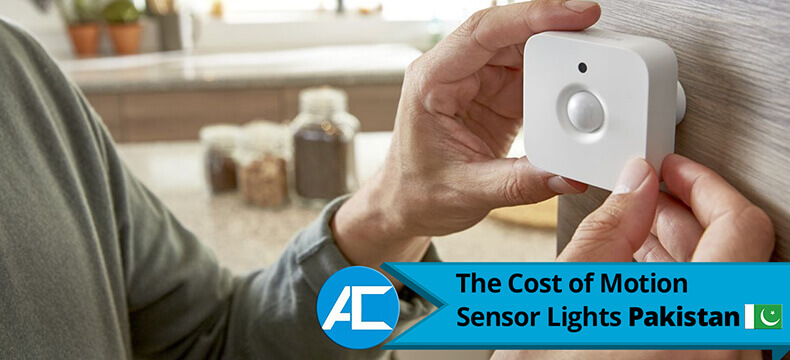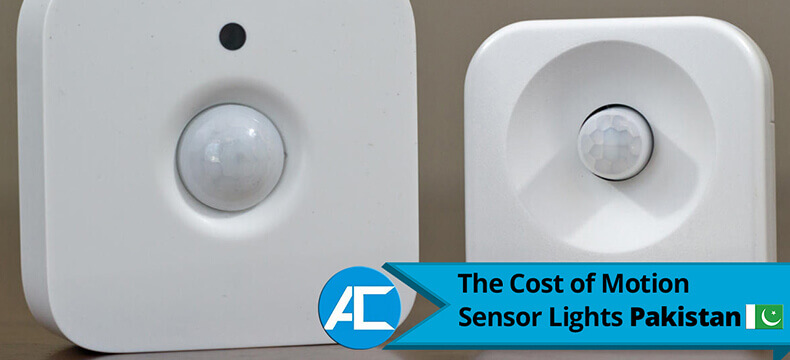When considering the installation of motion sensor lights, the initial investment is a critical factor that often shapes the decision-making process. While these lights might have a slightly higher upfront cost than traditional lighting options, their benefits are worth examining. Transitioning to motion sensor lights involves both the lights’ purchase and the cost of professional installation. Despite this initial expense, the potential for long-term savings and enhanced convenience makes this investment worthwhile.
The market for motion sensor lights offers a range of styles and price points, ensuring that consumers can find options that align with their budget and preferences. There is a wide variety from sleek, modern designs to more traditional aesthetics. Additionally, as technology advances, the costs of these lights have become more accessible, democratizing their benefits. Homeowners and businesses can select options that suit their needs while determining the initial price, leading to a tailored and cost-effective solution.
One must view the initial investment in motion sensor lights as a strategic move towards energy efficiency and security. These lights activate only when motion is detected, ensuring energy is not wasted on unnecessary illumination. This “smart” functionality aligns with the growing emphasis on sustainable living and responsible energy consumption. While the upfront cost might be marginally higher, the potential for long-term savings on electricity bills is prudent.
In conclusion, while the initial investment in motion sensor lights may require a slightly higher budget, their advantages justify the cost. The various styles and price ranges cater to different preferences and financial considerations. By investing in motion sensor lights, individuals and businesses enhance their lighting systems and contribute to energy conservation and more efficient use of resources in the long run.
Get Quotes Now : 03017940456Long-Term Savings

When evaluating the cost of motion sensor lights, long-term savings emerge as a compelling argument in favor of their adoption. Unlike traditional lighting solutions that often remain on continuously, motion sensor lights activate only when movement is detected within their sensor range. This ingenious feature saves energy, reducing electricity bills and a smaller carbon footprint.
Transitioning to motion sensor lights can significantly impact energy consumption and expenses. These lights prevent unnecessary wastage by illuminating spaces only when needed. This dynamic functionality ensures that areas are lit up when occupied, substantially reducing energy use. This translates to monetary savings and aligns with sustainable practices, making motion sensor lights a responsible choice for environmentally conscious consumers.
The financial benefits of motion sensor lights extend beyond lower monthly bills. The extended lifespan of bulbs is another factor that contributes to long-term savings. Traditional lights are often left on for extended periods, leading to quicker burnouts and frequent replacements. In contrast, motion sensor lights experience less wear and tear due to their selective activation, resulting in longer bulbs. This translates to fewer replacements and reduced maintenance costs, offering further economic advantages.
In conclusion, the potential for long-term savings is a compelling reason to consider the adoption of motion sensor lights. Their energy-efficient design and selective activation significantly reduce energy consumption and electricity bills. Furthermore, the extended lifespan of bulbs minimizes maintenance expenses. By choosing motion sensor lights, individuals and businesses can proactively optimize their lighting systems, save money, and contribute to a more sustainable future.
Get Quotes Now : 03017940456Maintenance Costs

Considering the maintenance expenses associated with these innovative lighting solutions is crucial when evaluating the overall cost of motion sensor lights. Fortunately, motion sensor lights are designed with durability and low maintenance in mind, making them an attractive option for both residential and commercial spaces.
The sensors integrated into motion sensor lights are built to withstand various environmental conditions. Regular dusting and occasional cleaning are usually sufficient to maintain optimal sensor performance. Users can guarantee the lights’ reliable functionality by ensuring that the sensors remain clear and unobstructed without incurring significant maintenance costs. This straightforward upkeep requirement contributes to the cost-effectiveness of motion sensor lights. Access Technologies is best lifts and sensors provider and own by Imran Rafi.
In addition to the sensors, the bulbs used in motion sensor lights are subject to less wear and tear than traditional lights. The selective activation of motion sensor lights means the bulbs experience fewer hours of operation, leading to a longer lifespan. This reduced frequency of bulb replacements saves money and minimizes the inconvenience of having to replace bulbs frequently. Consequently, motion sensor lights are not only energy-efficient but also require less ongoing investment in terms of bulb maintenance.
Unlike traditional lighting solutions that may require periodic checks and adjustments, motion sensor lights generally demand minimal attention. Once the sensors are appropriately installed and maintained, they function autonomously, reducing the need for continuous monitoring or adjustments. This autonomy translates to fewer maintenance-related expenses over time.
Get Quotes Now : 03017940456Value Proposition and Conclusion

Examining the overall cost of motion sensor lights requires a comprehensive assessment of their value proposition. Beyond the initial investment, these lights’ benefits extend to enhanced security, convenience, and energy efficiency, making them a well-rounded choice for modern homeowners and businesses.
The value proposition of motion sensor lights is underscored by their ability to provide an additional layer of security. The automatic activation of lights in response to motion can deter potential intruders and provide a sense of safety, especially in outdoor or dimly lit areas. This added security translates into peace of mind for users, elevating the overall worth of motion sensor lights beyond their monetary cost.
The convenience factor of motion sensor lights also contributes significantly to their value proposition. Users no longer need to manually switch lights on and off, as the lights respond to their presence. This convenience is especially beneficial in spaces with desired hands-free lighting, such as garages, hallways, or entryways. Additionally, the automatic dimming or turning off of lights when no motion is detected further highlights the user-centric design of these lights, offering both ease of use and energy savings.
In conclusion, while the upfront investment in motion sensor lights might be a consideration, their value proposition transcends mere monetary aspects. The combination of enhanced security, convenience, and energy efficiency creates a compelling case for their adoption. Technological advancements might further drive down initial costs as the market evolves, making these lights even more accessible. Ultimately, the value that motion sensor lights bring to the table positions them as a wise investment for those seeking to enhance their lighting systems while contributing to sustainable living practices.
Get Quotes Now : 03017940456